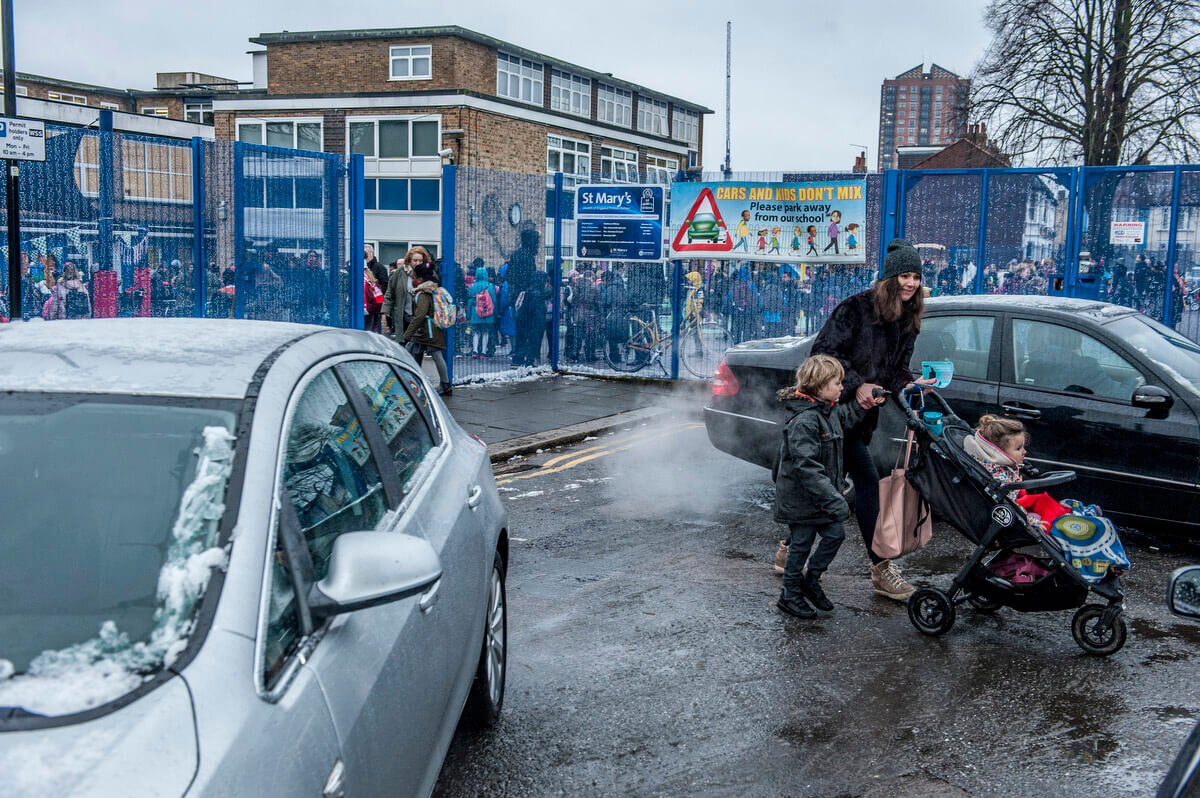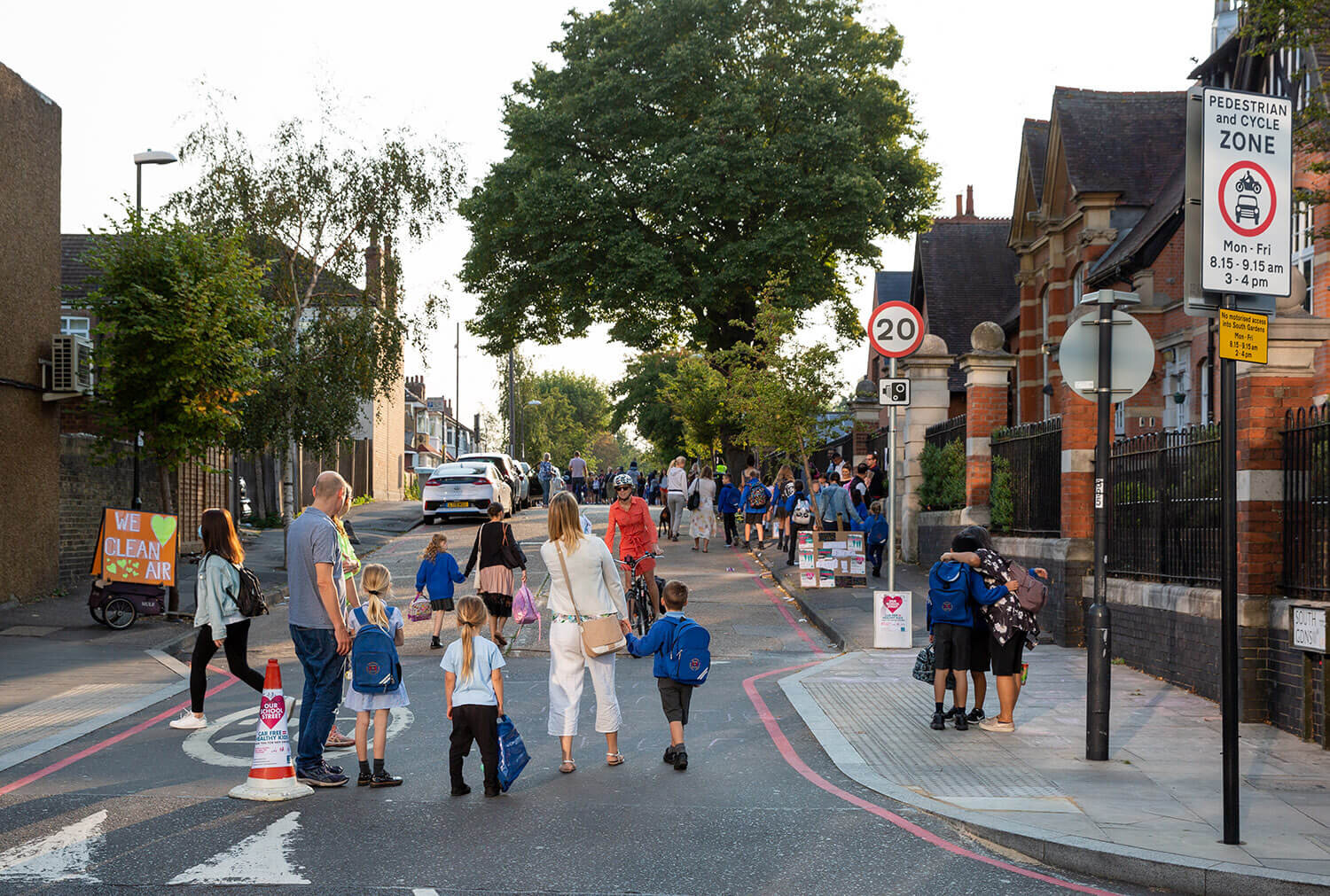
What can your
school do?
Are you a parent worried about air pollution?
Children spend much of their day at school, so their exposure to air pollution both on the journey and while they’re in class really matters. Many parents have told us they don’t know where to start with the subject at their school - we hope the following advice and resources help you to galvanise support to ensure action and awareness.
We’re always happy to chat on the phone if you need some support or to present to your school or headteacher/PTA.
If you’re in London, please sign up for our school pollution alerts system.
Whenever the Mayor of London issues a high pollution alert for London, we send out emails to pass on to your child's school - with a pre-drafted message that teachers can send out to parents.
Our handy guide to help you to start campaigning
Step 1 - Learn more
There are lots of helpful websites which explain what air pollution is. Scientific terms can seem confusing, but the two main pollutants of concern are nitrogen dioxide (NO2) and particulate matter (PM2.5).
To get started, please take a look at these resources:
Our air pollution leaflet, flyers, posters, banner, and template letters
Global Action Plan’s Clean Air Hub
Asthma and Lung UK’s information on air pollution
The University of Surrey’s guidance on air pollution around schools has been translated into 9 languages.
Step 2 - Talk to others
Discuss the issue with other parents and consider setting up a group chat on a messaging platform. This is a good way to share resources and ideas, and to suggest collective actions and awareness-raising activities with other parents. This can then lead on to the creation of a parents’ clean air group for the school.
Ideas for actions include handing out an idling, School Streets or air pollution awareness flyer, running a Walk To School day/week (see Living Streets’ website), or setting up a walking bus. These all create opportunities to raise momentum with parents and get the word out.

“The most important way to get results is through small steps to get the message out. It can take time to get a critical mass of people and buy-in from the school; but that’s how you bring people along with you.”
Step 3 - Approach the school
Consider approaching the headteacher or other members of the senior leadership team, who often have more headspace or time for this matter, and the Parent Teacher Association. Headteachers are very busy and are being approached by parents on many topics every day, so the message and the ask for the school need to be simple. A quick email with the basic resources and links to the headteacher could be enough to spark the conversation that is needed.
You could also spread the word initially by asking for the editor of the school newsletter to include a few lines about air pollution and your newly formed clean air group, to gather more interested parents into the group.
Step 4 - Take action!
Actions can often be organised by the parents’ clean air group, but the school needs to support and help by spreading the message through the newsletter, emails to parents and messages via class networks. You could:
Ask a teacher or find a parent volunteer to hold an assembly about air pollution (we have Key Stage 1 and 2 assemblies available to download here).
Support the school to take part in the Sustrans Cycle to School week, or their Big Walk and Wheel event.
Organise an event such as a Walk to School day , or something to mark the annual Clean Air Day and Clean Air Night.
Hand out our idling flyer at drop-off or pick-up times.
Organise an air pollution awareness banner to be placed on the school railings/fence.
Talk to your school about Bikeability training.
Advanced ideas
Once a good momentum has been established, help the school to raise awareness within the wider school community with positive encouragement for walking, cycling or scooting. You could ask the headteacher to draw up a tailored action plan using the Clean Air Schools Framework.
Go for Gold in the TfL Travel for Life programme in London or Modeshift Stars outside London - many councils have a dedicated officer who can help your school draw up a Travel Plan.
Campaign for a School Street if appropriate for your school. Join our School Streets Facebook group for help and advice.
Investigate putting a green screen at the boundary of your school.

“So much is about raising awareness. Even giving out a leaflet or encouraging a Walk to School event can help to change mind-sets. Creating excitement amongst the children is really important in influencing parents.”
We are keen to help
If you’d like to have a chat we’d be happy to arrange a phone call. Please get in touch to start a conversation!


